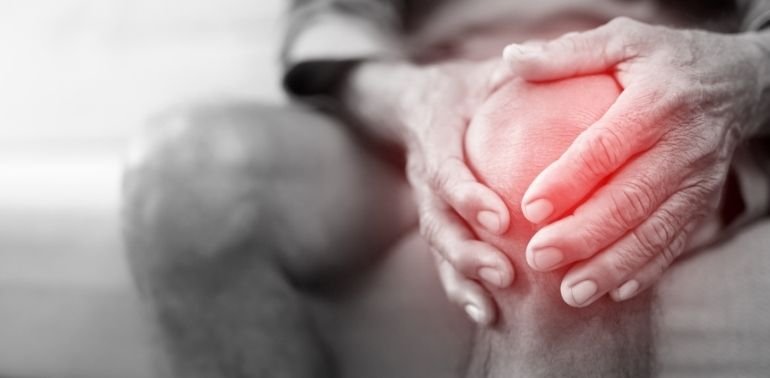Osteoarthritis

Osteoarthritis: Managing Joint Health and Pain Relief
Osteoarthritis is one of the most common degenerative joint conditions, affecting millions of people worldwide. It occurs when the protective cartilage cushioning the ends of your bones gradually wears down over time, leading to pain, stiffness, and reduced mobility. The condition can affect any joint, though it commonly targets the knees, hips, hands, and spine.
While osteoarthritis cannot be completely reversed, proper management can significantly alleviate discomfort, improve joint function, and enhance overall quality of life. Early intervention and ongoing care are key to slowing the progression of the disease and maintaining daily activity levels.
Understanding Osteoarthritis: Causes and Signs
The exact causes for osteoarthritis can vary, but several factors increase the risk of developing this joint condition:
-Age: The risk of osteoarthritis increases as you get older.
-Joint Injuries: Previous injuries, even those that happened years ago, can raise your risk.
-Obesity: Excess weight puts additional stress on weight-bearing joints, especially the knees and hips.
-Genetics: A family history of osteoarthritis increases the likelihood of developing the condition.
-Occupation: Jobs involving repetitive joint stress can contribute to the breakdown of cartilage.
Recognizing the signs of osteoarthritis early can make a significant difference in treatment outcomes. Common symptoms include:
-Joint pain and stiffness, especially after periods of inactivity
-Swelling and tenderness in affected joints
-A grinding or clicking sensation when moving joints
-Reduced flexibility and range of motion
Osteoarthritis Treatment: Effective Management Strategies
Treatment for osteoarthritis aims to reduce pain, improve joint function, and enhance the quality of life. A combination of therapeutic approaches is typically recommended, depending on the severity of the condition. Common osteoarthritis treatments include:
-Osteoarthritis therapy through physiotherapy involves exercises to improve flexibility, strength, and joint stability.
-Weight management to reduce pressure on weight-bearing joints.
-Heat and cold therapy for pain relief and reducing inflammation.
-Pain-relieving medications and topical creams.
-Assistive devices like braces, splints, or walking aids to support weakened joints.
- Reducing Joint Pain and Swelling for improved daily comfort.
- Improving Joint Mobility and Function to support an active lifestyle.
- Slowing Down Cartilage Degeneration through targeted therapies.
- Enhancing Quality of Life by managing symptoms effectively.

Specialized Therapy for Osteoarthritis Knee and Hip
Knee osteoarthritis symptoms often include pain during movement, swelling, stiffness, and a grating sensation. Specific therapy for osteoarthritis knee is essential for preserving mobility and delaying joint replacement surgery.
Physical therapy exercises for knee osteoarthritis typically focus on strengthening the quadriceps, hamstrings, and calf muscles, improving joint flexibility, and enhancing balance. Exercises like straight leg raises, step-ups, and gentle stretches can reduce knee pain and support everyday activities.
Similarly, hip osteoarthritis leads to groin pain, stiffness, and difficulty with movements like walking or climbing stairs. Tailored physiotherapy and strengthening routines help reduce pain and maintain hip function over time.
How to Avoid Osteoarthritis: Prevention Tips
Though not all cases are preventable, certain lifestyle choices can lower your risk or delay the onset of osteoarthritis:
-Maintain a healthy weight to reduce stress on joints.
-Stay active with low-impact exercises like swimming, cycling, and walking.
-Avoid repetitive joint stress from overuse or poor body mechanics.
-Protect joints during sports and physically demanding tasks.
-Address joint injuries promptly to prevent long-term damage.
By adopting these habits, you can better safeguard your joint health and reduce the risk of developing osteoarthritis in the future.
FAQs About Osteoarthritis
What causes osteoarthritis?
Osteoarthritis occurs due to cartilage breakdown caused by aging, joint overuse, or injury.
Can osteoarthritis be cured?
While it cannot be cured, symptoms can be effectively managed to improve quality of life.
What treatments are available for osteoarthritis?
Treatments include physiotherapy, medications, lifestyle changes, and joint support devices.
How can exercise help with osteoarthritis?
Low-impact exercises strengthen muscles, reduce stiffness, and improve joint function.
When should I seek professional help for osteoarthritis?
If pain or stiffness limits your mobility or daily activities, consult a specialist.
GET APPOINTMENT
Start Up Your Health Care With Us
Experience Staff
Our therapists are trained and certified in therapy technique
Personalized Treatment
Personalized Treatment I'll book a meeting so we can solution this before the sprint
